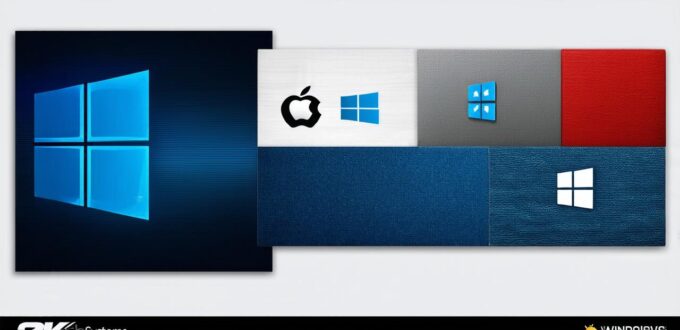Operating systems (OS) are software programs that manage and coordinate computer hardware and software resources. They provide a way for applications to interact with the computer hardware and enable multiple users to run programs simultaneously.
1. Bare Metal Operating Systems:
Bare metal operating systems are installed directly on the computer hardware without any other software layer between the OS and the hardware. This type of OS provides direct access to the hardware, making it ideal for system administrators and developers who need to customize the system’s settings.
1. Monolithic Kernel Operating Systems:
Monolithic kernel operating systems have a single, all-encompassing kernel that controls all aspects of the system’s operation. This type of OS is highly optimized for performance and provides quick access to hardware resources.
1. Microkernel Operating Systems:
Microkernels are modular operating systems that separate the system’s core services into independent modules. This allows for greater flexibility in customization and makes it easier to add new features and services.
1. Real-Time Operating Systems:
Real-time operating systems are designed to meet specific time constraints, such as responding to user input within a certain amount of time. This type of OS prioritizes real-time processing over other tasks, making it ideal for applications that require precise timing and synchronization.
1. Embedded Operating Systems:
Embedded operating systems are designed specifically for embedded devices, such as routers, appliances, and automobiles. These OSes have limited resources and are optimized for specific tasks, such as network routing or vehicle control.
Case Studies and Personal Experiences
One example of a software developer using different types of operating systems is a web developer who needs to work on different projects. For their personal development project, they might use a bare metal operating system like FreeBSD or Linux for greater flexibility and customization. However, when working on a commercial project that requires real-time processing, they might switch to a real-time operating system like VxWorks or QNX.
Structure and Comparisons
Each type of operating system has its own strengths and weaknesses, making it important to choose the right one for a specific task or project. Bare metal operating systems provide direct access to hardware but can be more difficult to configure and manage than other types of OSs. Monolithic kernel operating systems are highly optimized for performance but can be less flexible than microkernels. Microkernels provide greater flexibility in customization but can have slower performance than monolithic kernels. Real-time operating systems prioritize real-time processing but may not be as customizable as other types of OSs. Embedded operating systems are optimized for specific tasks but may have limited resources and be less flexible than other types of OSs.

Research and Experiments
There have been numerous studies and experiments conducted on different types of operating systems to understand their strengths and weaknesses. For example, a study by Andrew Tanenbaum found that microkernels were more secure and easier to customize than monolithic kernels. Another study by Joseph Cox found that real-time operating systems were more reliable and had lower latency than non-real-time OSs in certain applications.
FAQs
1. What is the difference between a bare metal operating system and a monolithic kernel operating system?
A bare metal operating system has a single layer of software that directly controls the hardware, while a monolithic kernel operating system has a single, all-encompassing kernel that manages all aspects of the system’s operation.
1. What is the purpose of a microkernel operating system?
A microkernel operating system separates the system’s core services into independent modules, allowing for greater flexibility in customization and making it easier to add new features and services.
1. What are some examples of real-time operating systems?
Some examples of real-time operating systems include VxWorks, QNX, and RTX.
Conclusion
In conclusion, there are five main types of operating systems: bare metal, monolithic kernel, microkernel, real-time, and embedded. Each type has its own strengths and weaknesses, making it important to choose the right one for a specific task or project. As software developers and system administrators, it is essential to understand the differences between these types of operating systems to make informed decisions and optimize performance.
